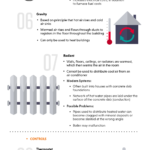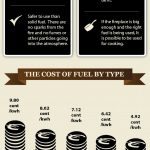In the wake of winter, most homeowners begin to dread the prospects of high energy bills and inadequately heated living areas. Even with seamless weather-stripping and optimal external and internal insulation, there will always be a few phantom heat leaks that may compromise the comfort of your home.
As a general rule, windows are the biggest heat outlet and if not outfitted with the right type of panes, they can considerably up your electricity bills without providing warmth that goes with the price. To keep freezing temperatures and high energy expenses at bay this winter, opt for energy-efficient windows with either double- or triple-glazing. If the idea sounds worth a go, here are some retrofit window basics to help you pick the right set of new panes for your home.
How energy-efficient windows work
Double-glazed windows consist of two panes separated by a gap (usually 16 millimeters wide). The air trapped between the two glass sheets is filled with either air or gas and functions as an insulating block which prevents escape of heat. Triple-glazed windows have three panes of glass, each separated from the other by an air- or gas-filled space, and they often provide better insulation than their double-glazed counterparts.
Top benefits of retrofit windows
In addition to keeping the house warm and reducing electricity bills, this retrofit also entail a lower carbon footprint than the traditional option, which it more earth-friendly, we learn from Melbourne-based retailers of double glazed windows. Other known benefits include fewer draughts, lower external noise levels and minimal condensation. On top of that, double- and triple-glazed windows are very durable and can last up to 20 years, which translates as higher long-term savings.
Retrofit glass and gap filling options
When choosing energy-efficient windows, pay attention to BFRC ratings, and if possible, opt for low-emissivity panes internally coated by metal oxide to minimize loss of heat while ensuring ample sunlight. Other features to keep an eye out on when shopping for new windows include use of internal gasses (such as argon, krypton or xenon) and pane spacers known as warm edges which should contain little or no metal for maximum heat loss prevention.
Window frame types used in earth-friendly windows
Energy-efficient windows are available in four main frame types, i.e. uPVC, wood, composite and aluminum/steel framing. While uPVC and aluminum/steel frames are recyclable, slender
ABC of energy and U-value ratings
Most double- and triple-glazed windows are rated according to their energy efficiency. The energy performance scale devised by the British Fenestration Rating Council runs from A to G, A-rated windows boasting highest heat retention. In addition to the window energy rating, you should also check the U-values shown on the label and pick the panes with lowest U-values as they entail minimal heat loss and improved insulation features.
Ventilation aspects of earth-friendly windows
Retrofit windows are air-tighter than standard panes, so you should strive to keep your home properly aired to prevent condensation buildup. If your house is lacking in adequate ventilation features, consider either regularly airing the rooms or choosing windows with trickle frame vents. If condensation continues to build up despite your best efforts, your household may be suffering from a damp problem which you will need to tackle on your own or hire experts to fix it for you.
Winter is just around the corner, but days of warmth and comfort are not gone. With the right set of windows, you home will stay cozy and well-heated even with blizzards raging outside – so go ahead and replace your panes with retrofit glazing while the weather still allows it.






